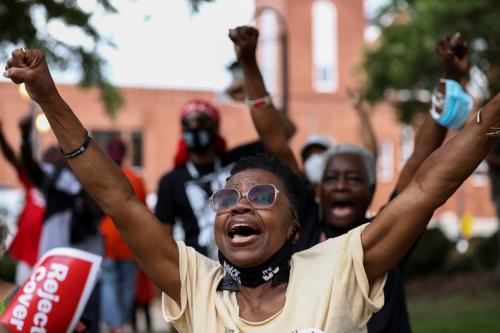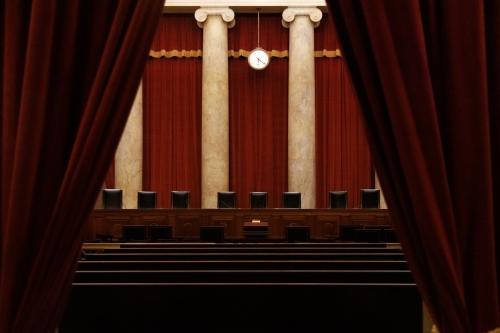In this series we look at how younger voters are likely to impact future elections and American politics going forward.
How are young people reshaping the consumer marketplace and what should this tell us about the political marketplace? Understanding a few key elements of their marketplace behavior may help us understand something about their political behavior as well.
First, younger Americans live in a world of fragmented communications
This year saw the folding of not one, not two, but three influential media brands, each at one point considered the youth darling. The first two, Buzzfeed and Vice Media, were built on a trend started by the third, MTV News — to provide a solid alternative to traditional news programs by appealing to younger Americans.
All three succumbed to the same change in the marketplace that led to their eventual decline: fragmentation of communication. The number of Millennial eyeballs on these news sites was a misleading indicator of success. Their attention turned out to be fleeting. There are too many sites for advertisers to consider and too many new platforms (see Snapchat and TikTok) for the next generation, Plurals, to engage with and get their news from instead.[1]
There’s a lesson here for political campaigns if they’re willing to listen: the winds of change pick up quickly online and with the Pluralist generation. Loyalty is harder to come by, and trust is harder to earn.
Second, younger Americans don’t have strong brand loyalty
Communication fragmentation is but one element of more extensive societal fragmentation impacting how Plurals engage with and shape market forces. However, it is the one with the most risk attached to it. Because Plurals do not get their information through any standard channel, brands no longer have a firm hold on the keys to their narrative.
Plurals know to be skeptical of company claims, as the Internet allows them to root out misalignment between messaging and reality. For example, Plurals are the least trusting of brands’ sustainability claims. They are also most likely to boycott a brand, versus other generations, by a wide margin. Plurals may be the least brand-loyal generation in America. This should be most worrying for brands or politicians that try to be everything to everyone. Brands of all kinds, including political parties, must reconcile their values and ensure alignment of their actions and messaging with consumers of whatever they sell.
We’ve written before in this series about how America’s youngest generation, Plurals, have a higher level of distrust of significant institutions than the generation preceding them. Political or branding campaigns should consider this skepticism a warning sign as they attempt to spur interest among Plurals.
Where is the trust going? The answer is to ordinary people. Once brands recognize that they can no longer shape their narrative at will with traditional marketing, they can engage in ways that most resonate with Plurals — for example, allowing the brand to be interpreted and represented by relatable, everyday creators and influencers online. The person with the most followers does not necessarily have the most influence. Non-celebrity influencers are trusted over celebrities, and even the engagement rate decreases as an influencer’s total follower count rises.
Showing the support and partnership with influential everyday people, versus celebrities or other establishment candidates, mainly via social media and digital marketing, is a great way to affirm the “branding” of political campaigns. For political campaigns, consistent messaging is more important than ever, particularly for this generation.
Plurals are also purchasing more from niche brands, lining up with the value this generation places on individual self-expression over fitting in. As we discussed in our previous article, this generation grew up in a society perceived as more chaotic. In the fashion sector, seemingly chaotic combinations are deemed cool. That is why popular Plural brands like Motel Rocks put their customers front and center, highlighting customers wearing their clothing in their social feeds.
For Plurals, Crocs hits the sweet spot between pragmatism and self-expression with cushiony, waterproof shoes that wearers can also decorate with charms. As an indicator of the power of this generation, Crocs are now the fastest-growing brand among all ages. This is as much an indication of Crocs enabling self-expression as highlighting their own, never one to shy away from sharing their values. No longer are the realms of political views and business separable, as Plurals lead the consumer charge to hold brands accountable to their politics.
When appealing to the self-expression generation, holding a strong perspective is better than doubling down on party politics; although the generation has shown a clear Democratic tilt in its voting to date, it has not yet solidified its partisan loyalties. Values and vision must align with those of a generation that particularly emphasizes inclusion and diversity. With Plurals, the candidates who win on values and empathize with their potential constituents, will win the election.
Third, these young voters grew up amidst instability and pragmatism
Another consumer behavior trend traces back over a decade. Plurals grew up amidst instability in the United States, politically, economically, and environmentally in a way that was and continues to be pervasive. Stability and pragmatism are key drivers of their consumer behavior, resulting in outcomes like a fast-growing market for second-hand goods and tracking ahead of the previous generations in terms of homeownership. Plurals exhibit a strong discernment in their spending while dealing with inflationary pressures, pulling back on items like apparel and gifts, but continuing to save for retirement.
The irony and nihilism prevalent with their parents, Gen X, are also back in full force. This is particularly visible in Internet aesthetics on TikTok, like #CoreCore, video mashups of media and social media clips with music overlays that critique aspects of modern society, often in a surreal or self-referential way.
Candidates must realize that Plurals are starting from this place of cynicism. The era of hope is over, replaced with a demand for pragmatic plans. Despite some polarization, Plurals are united across party lines regarding their top issues. This implies that the significance of candidates expressing their concerns and talking about the issues they care about is diminished, while the importance of politicians effectively addressing and gaining support on those issues is heightened.
Conclusion
Forward-looking candidates and political campaigns must go on the offense, lest they end up like many media companies and brands, fast-fading stars crashing in on themselves. Going on the offense starts with knowing how to earn trust among a skeptical generation by focusing on message consistency and engagement with everyday influencers. It also means holding a strong perspective and building the strength of an individual brand outside of the brand of party politics. Finally, strategies should prioritize not only what needs to be done but also how it is being accomplished. This generation’s political and societal awareness permeates every aspect of their life. Just as Plurals are already assuming leadership roles in the business world, they are also emerging as a formidable force to be reckoned with in the realm of politics.
[1] Plurals are people born between 1997 and 2014.




Commentary
How younger voters will impact elections: Lessons from the consumer marketplace
June 15, 2023